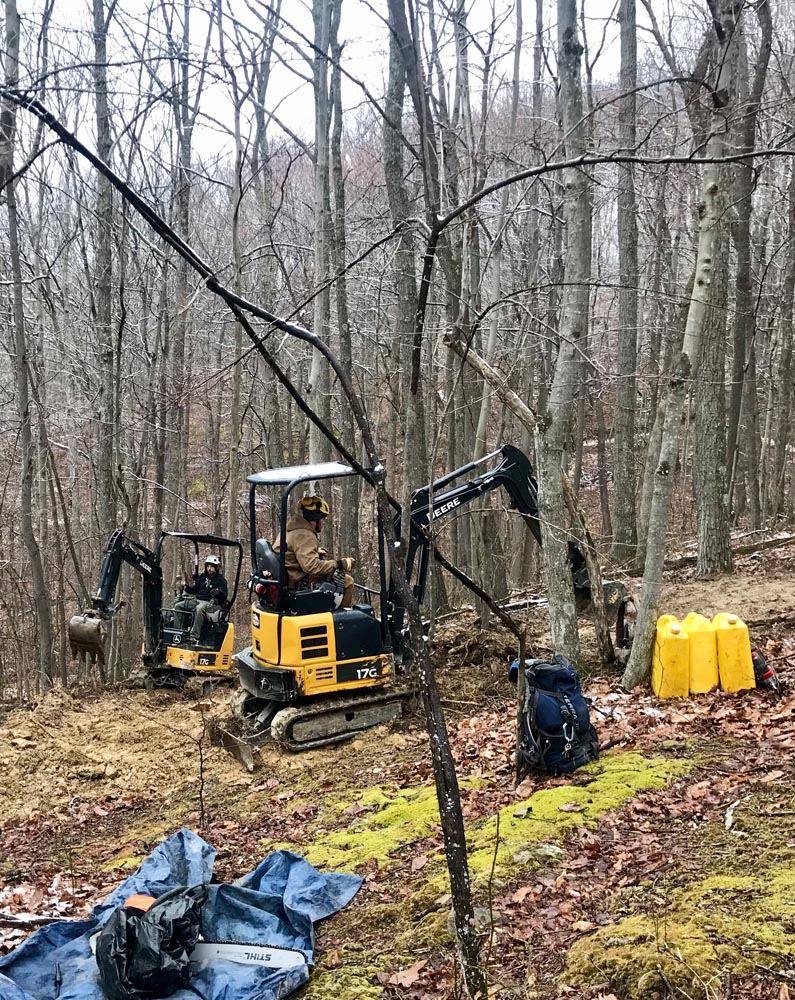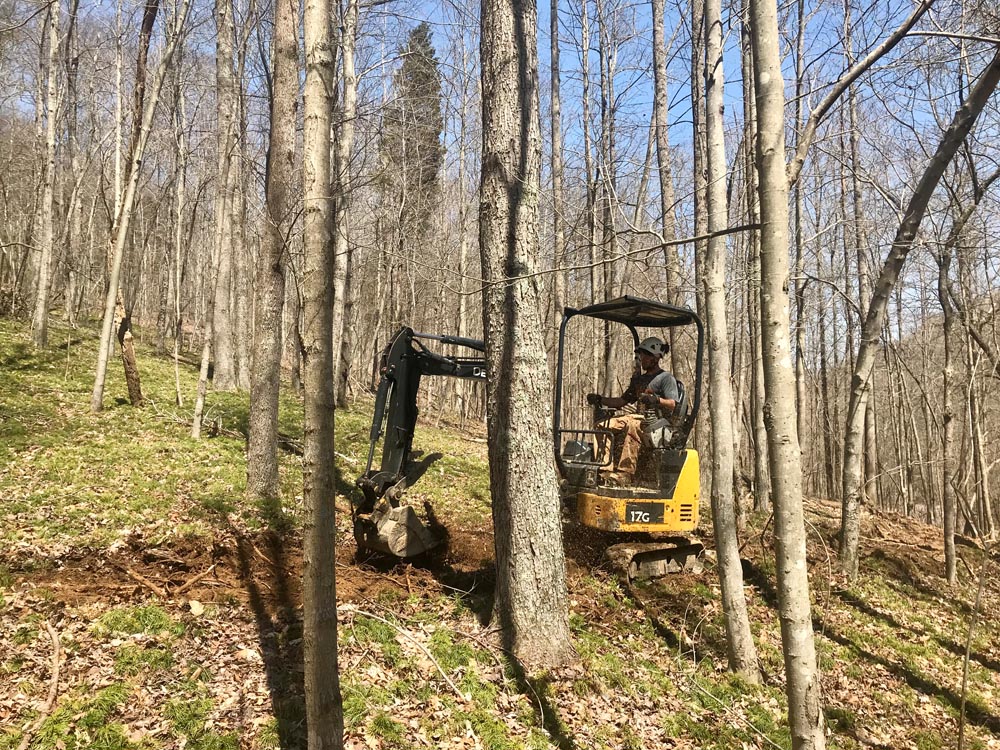Nestled deep in the rolling hills of southern Ohio about an hour and a half’s drive from Cincinnati and not far from the Kentucky border are 20,000 acres of mostly deciduous forest and some prairie that are owned and protected by the Nature Conservancy. The Edge of Appalachia Nature Preserve is home to about 100 different kinds of rare plants and animals, including two federally listed bats and a snake that is considered an endangered species by the state of Ohio. It’s the kind of place you’d go to enjoy a quiet walk, to kayak or canoe, to observe wildlife and native plants or to practice nature photography.
Until recently, public access to the largest private nature preserve in the midwestern U.S. was limited to 10 miles of trail, but thanks to a partnership with the Buckeye Trail Association, the Edge of Appalachia Nature Preserve now also hosts a 14-mile section of trail that does double duty as part of two different long distance hiking trails: the 1,444-mile Buckeye Trail, which loops around Ohio, and the 4,600-mile North Country Scenic Trail, which runs from North Dakota to Vermont. Dirt Artisans was responsible for building nine of the 14 brand new miles of trail.

More and better trail
For several years, the Buckeye Trail Association (BTA) had been politely asking the Nature Conservancy if they could re-route a short section of the Buckeye Trail from a nearby road onto what would be a new trail winding through the Edge of Appalachia’s property. The BTA has been engaged in a long-term effort to move more and more of the entire Buckeye Trail route off roads and onto trails.

“One of the overall efforts we have as the Nature Conservancy is to do a better job of connecting people to nature. But when we got our start back in the late 1950s, we weren’t geared up to provide the resources needed for public access. There is a cost associated with that, and it takes time and effort to build and maintain trails,” said Terry Seidel, Director of Land Protection at the Nature Conservancy in Ohio.
“As the organization has grown in scope and capacity, we have realized that if we are going to successfully achieve our mission, we need to engage people in a more significant way. That’s why we decided to have this trail constructed on our property. It’s the first backpacking trail that we’ve ever put on our properties in Ohio, and it’s the first time we’ve had any campsites of any type, even primitive ones. It was a big step for us.”
Not only is the new section of trail part of two long-distance hiking trails, it also serves as a tangible, physical connection to the nearby 65,000-acre Shawnee State Forest.
Funding the Trail
The new trail came into being the way many new trails are being built across the U.S. - thanks to the collaboration of motivated stakeholder organizations and individuals and with help from grant money.
“The trail’s original route was on roads that already ran through our property, so there was an obvious opportunity for us to be engaged,” said Seidel. “We applied for a trail grant from the Clean Ohio Fund. The Buckeye Trail Association provided part of the match needed for the grant by building some trail sections by hand, and they laid out the trail. They also helped to oversee the work done under the grant.”

The Nature Conservancy heard about Dirt Artisans through the Professional Trail Builders Association (PTBA), of which Dirt Artisans is a member.
“Having hired another PTBA-affiliated trail builder from Georgia for past work, we realized the value of having someone who is a member of the PTBA doing the work,” said Seidel. “In doing a web search, I found out about Dirt Artisans and saw that they were based close to us, and another contact also recommended them.”
What was important to the Nature Conservancy and the Buckeye Trail Association was having the right kind of trail for the property and building it in a way that protected the habit of endangered species living in biological sensitive areas on the property. They wanted narrow, winding, natural surface, hiking-only trails.
Protecting the Bats and Snakes
The Edge of Appalachia Nature Preserve is home to two rare bats: the northern long-eared bat and the Indiana bat. Both live in woodlands and roost on trees. This meant that Dirt Artisans had to respect restrictions put into place to protect the bats: no trees larger than three inches in diameter could be cut down during certain times of the year.
“We were very conscientious about the trees and which ones we took when, but the reality is that we were able to route the trail well, winding it through the woods so that very few trees needed to be removed,” said Seidel.
Irey said, “Working together as a team, we marked which trees needed to be cut, and then they cut them for us during the correct time of year for the bats.”

The trail was also routed with consideration for the dens of timber rattlesnakes, which like rocky areas for overwintering.
“Having been hammered by human persecution for awhile, the timber rattlesnake is endangered in Ohio now. Historically these fascinating animals were abundant, but today they are very rare and need protection,” said Seidel. “They are amazing animals. Most people would walk by their burrows and never even notice that they’re there.”
An expert helped with the re-routing of small sections of the new trail after the initially planned route was discovered to go right through an area that was important to the snakes. Dirt Artisans also had to be careful to move equipment into and from where the work was happening without disturbing the snake’s habitat.
Lest the presence of rattlesnakes make the idea of walking the new trail seem unappealing, Seidel had some words of perspective and reassurance. “Ohio has lost a lot of truly wild habitat. For example, we’ve lost elk, mountain lion and bison. We’ve mostly lost bears and bobcats, but they are coming back. The timber rattlesnake is a rare icon worth protecting though most people will never actually see any of the snakes.”
Other Challenges
Dirt Artisans has a long track record of building multi-use trails and mountain-bike specific trails, so the opportunity to focus on a project building hiking-only trails meant a shift in mindset.
“It was different for us to get out of the swoopy, flowy mountain bike mentality. That kind of trail doesn’t make as much sense for a hiking-only trail,” said Irey. “But I’m also a backcountry hiker, so I understand what hikers want when they are out there hiking. We routed the trail more directly while, of course, still making sure it was sustainable and shed water correctly.”

Fortunately, Dirt Artisans has lots of experience creating trails on diverse terrain throughout the country, and they were up to the challenge of building across the hills and valleys and streams and gorges characteristic of the foothills of Appalachia even though the terrain is steeper than in other parts of Ohio.
Another difficulty faced by Dirt Artisans was the rural, remote nature of the area. They were frequently working two to three miles from any road in an area with little or no mobile phone coverage. That made advanced coordination of logistics all the more important, especially for tasks like bringing supplies such as fuel and spare parts into where the trail work was happening.
Wrapping it Up
Dirt Artisans finished the first part of the project in the spring of 2018 before completely wrapping up their nine-mile segment during the winter of 2018-2019. The Buckeye Trail Association now maintains the entire 14-mile section trail on behalf of the Nature Conservancy.
“I’ve gone back and looked at the trail we built now that it’s been two years, and it looks just like the old CCC-built trails that many of us love. Aesthetically, it blends in with the surroundings,” said Irey. “It’s a pencil-wide hiking trail even though we built it with three-foot wide machines.”

The Nature Conservancy has also been pleased with the trail. “I’ve been very impressed with Dirt Artisans, their interest in what we do and their technical knowledge and expertise in building these trails. “Building trails is about as much of an art as a science. You need to have a good eye to build the trails technically, but you have to be sensitive to the environment and habitat you’re building in. We wanted a trail that wasn’t bulldozed through the woods - we wanted it to feel natural and like you almost wouldn’t notice it.”
Following upon the success of their first project together, the Nature Conservancy of Ohio and Dirt Artisans are already well into collaborating on another project: Cedar Falls is a 1.5-mile long trail that will also include an overlook and is due to open this spring.